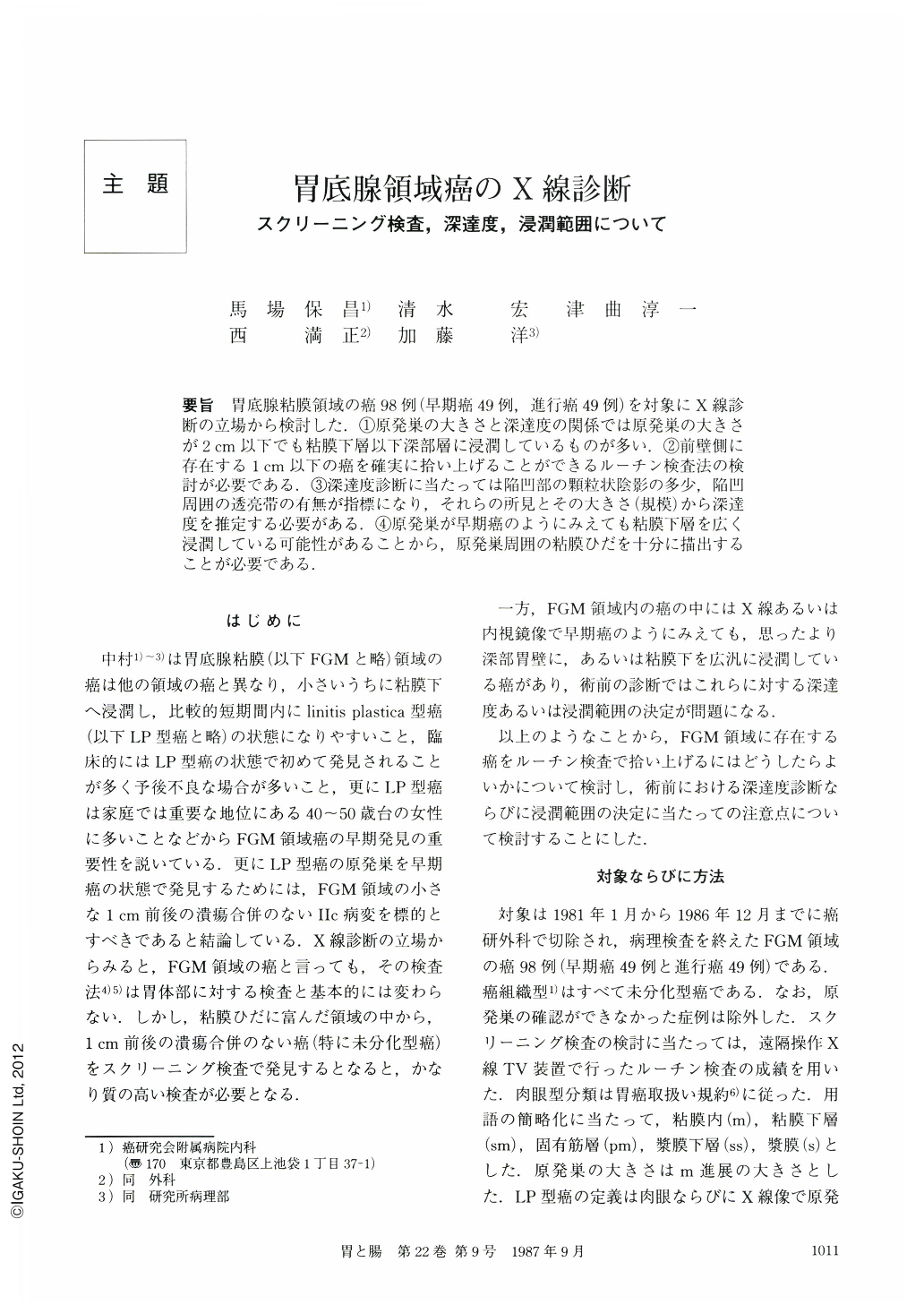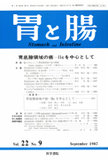Japanese
English
- 有料閲覧
- Abstract 文献概要
- 1ページ目 Look Inside
- サイト内被引用 Cited by
要旨 胃底腺粘膜領域の癌98例(早期癌49例,進行癌49例)を対象にX線診断の立場から検討した.①原発巣の大きさと深達度の関係では原発巣の大きさが2cm以下でも粘膜下層以下深部層に浸潤しているものが多い.②前壁側に存在する1cm以下の癌を確実に拾い上げることができるルーチン検査法の検討が必要である.③深達度診断に当たっては陥凹部の顆粒状陰影の多少,陥凹周囲の透亮帯の有無が指標になり,それらの所見とその大きさ(規模)から深達度を推定する必要がある.④原発巣が早期癌のようにみえても粘膜下層を広く浸潤している可能性があることから,原発巣周囲の粘膜ひだを十分に描出することが必要である.
Ninety-eight cases of gastric cancers (49 early and advanced types) of the fundic gland mucosa were studied with respect to radiological findings. These were the cases experienced at the Cancer Institute Hospital in 1981 through 1986.
1. Size and depth of invasion of primary lesion
Primary lesion was 2cm in diameter or less in 64.3% (63/98) of the cases. In those cases, however, carcinoma was limited intramurally in only 27% (17/63).
Thus, it may well be said that carcinomatous invasion exist deeper than the submucosa even when the primary lesion of the fundic gland is small.
2. Sensitivity of the routine examination (by remote controlled x-ray TV apparatus)
Twenty-one cases (77.8%) of 27 cases were detected by this method, a comparable sensitivity for early gastric cancers as a whole. As for 12 cases of gastric cancers on the anterior wall, however, detection rate was lower 58.3% (7/12). Therefore, more accurate methodology is needed to detect cancers on the anterior wall by routine radiological examination.
3. Diagnosis of depth of invasion
The following factors are helpful in determining radiologically whether the cancer is limited in the mucosa or not; (1) the degree of granulation on the surface of depression, (2) presence or absence of radiolucent area surrounding depressed lesion. The rate of submucosal invasion was high, 86.2% (25/29), when few granulations were seen. It was also high, 90% (18/20), when there was radiolucent zone surrounding the depression.
4. Diagnosis on the boundary of infiltration in LP type carcinoma
(1) It tends to be thought that the more cancer infiltrates in the submucosa, the more it occurs along the vertical axis as well as along the horizontal axis resulting in the involvement of the entire stomach.
(2) It is, therefore, imperative that even if the lesion looks like early cancer at a glance, the mucosal folds arround the lesion be fully examined radiologically.

Copyright © 1987, Igaku-Shoin Ltd. All rights reserved.


